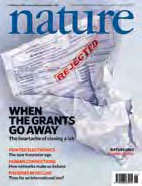How Do Networks Work?
A UNM professor studies the relationship between networks and energy consumption.
The relationship between how networks are constructed and how they shape their environment, especially in regards to energy consumption, has long interested Melanie Moses, assistant professor of computer science.
A presentation Moses gave on "Network Scaling in Societies" triggered an invitation to contribute an essay to the international science publication Nature. Her essay was part of a series on "Being Human" that explores various scientific and academic aspects of what makes people different from other animals. "Nature is a very prestigious publication," says Computer Science Department Chair Stephanie Forrest. "For Melanie to be asked to submit an essay is truly an honor and an indication of the caliber of her research."
Published in the February 5, 2009 issue, Moses' essay confronts what Nature refers to as "humanity's greatest paradox: how to reduce the demand for energy in increasingly complex, networked and therefore energy-dependent societies."
In her essay, Moses looks at the connection between human networks and their demand for energy through the lens of human reproduction rates. She refers to the Metabolic Theory of Ecology, which biologists use to explain why elephants have many fewer offspring than mice, but also live much longer. The theory states that both are related to the length of the circulatory network needed to provide nutrients to the cells of each animal: the longer the network, the slower the metabolism, and the fewer the offspring. Moses states, "North Americans consume energy at a rate sufficient to sustain a 30,000-kilogram primate, and give birth at the very slow rate predicted for a beast of this size."
This takes into account the power we consume through electrical, oil, gas, and other networks. MTE also explains why humans with the most resources tend to reproduce the least: each child in a developed nation takes a great deal of resources, and parents react by having fewer children.
Moses asserts that by getting a clearer picture of how networks function, humans will be able to build more efficient social and infrastructure networks to meet rising energy demands without putting the burden on future generations. Her research combines theoretical and computational approaches with biological fieldwork focusing mainly on ant colonies. Moses and her students study the colonies in the field and then build models in the lab to understand how ants use networks to exchange information and forage for food efficiently. "We use ants as inspiration to develop algorithms to guide efficient search in other domains," says Moses. "Ant colonies, global trade, and cities are all sustained by dynamic networks that deliver energy. We can apply what we learn from studying ants to improve efficiencies in traffic, oil consumption, and how we structure cities."
Cover Image reprinted by permission from Macmillan Publishers Ltd: NATURE, Volume 457 Number 7230, 5 February, 2009.
